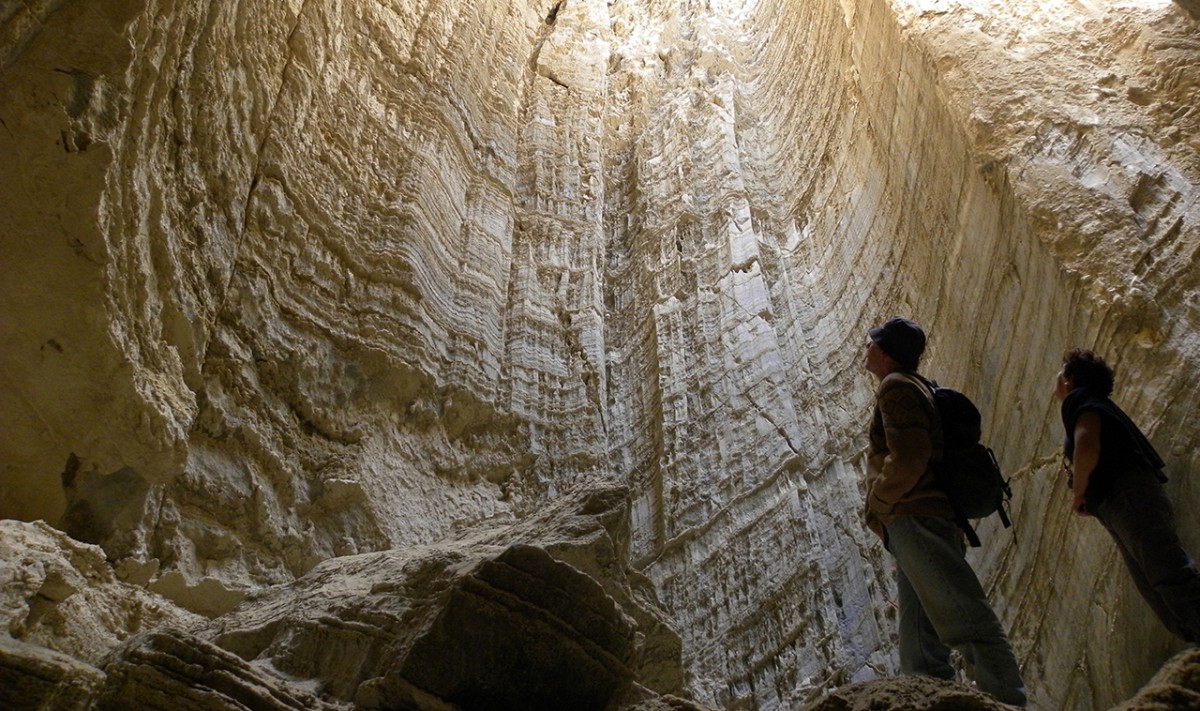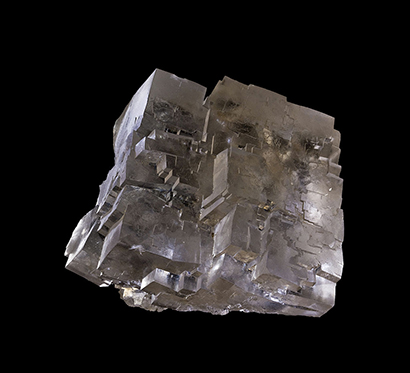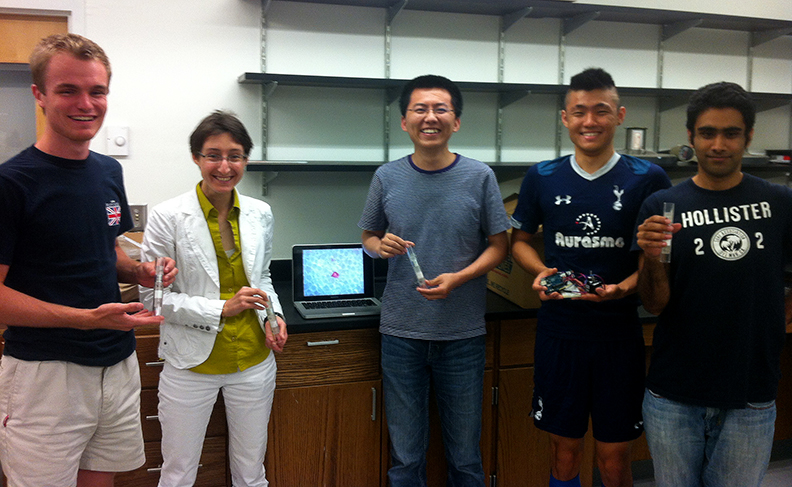 |
| A salt cave in Mount Sodom, Israel. (Photo Courtesy of Mark A. Wilson via Wikimedia Commons.) |

Chloe Arson spends a lot of time thinking about salt.
And when it comes to the seemingly simple combination of sodium and chlorine, “The more you know, the more you don’t know,” she says.
Arson is an assistant professor in the School of Civil and Environmental Engineering (CEE). Her research focuses on damage and healing models for rocks. Salt rock, as it happens, is a perfect subject for her inquiries.
“It turns out that salt rock is a kind of magic rock, because under constant stress and temperature conditions, it can re-bond the cracks that are in it,” Arson said. “So it is a good model material to study healing processes in minerals and in rocks in general.”
Understanding how salt rock can fix cracks in its structure and how it behaves under stress has important real-world implications.
Oil and gas companies use salt caverns and old salt mines to temporarily store natural gas and oil when supply outstrips demand.
Nuclear power plants can use the underground spaces for long-term nuclear-waste storage.
The salt caverns can even act as a sort of battery for wind energy, holding compressed air collected when there’s more wind than energy demand and then using that stored air to create energy when it’s needed.
All that loading and unloading of the caverns puts stress on the rocks, but Arson’s work could help engineers understand how frequently they can do it while taking advantage of the salt rock’s natural healing tendencies.
 |
|
| (Photo Courtesy of Didier Descouens via Wikimedia Commons.) |
Arson said scientists still don’t understand many of the processes that govern how the rock behaves. They can observe what happens to salt rock’s microscopic structure under pressure or at specific temperatures in the lab. They can also observe changes at a larger scale. But they can’t yet link the two.
“How do these two scales interact? That could be the key to many questions we have,” Arson said.
That’s where the mathematical models she’s developing come in, connecting the dots between processes so engineers will have a better understanding of how salt caves will behave in real-world use.
This spring, Arson and some colleagues at Texas A&M University received National Science Foundation (NSF) funding to study how salt rock cracks, deforms and re-bonds. They want to connect specific ways rocks deform to the underlying microscopic processes that lead to that damage.
“The goal is really, for engineering purposes, to be able to control somehow this material that you have in the field,” she said. “A cavity is not a steel structure in which you design your steel members in a factory and then you use them. You’re using something that is already in place, so if the rock deforms in a way that you were not expecting, you need to be able to monitor that and then to have plan B’s and relate that to what you know of the rock.”
 |
||
| Arson (second from left) and her research team hold the experiment they've designed to assess how salt grains organize themselves when they're placed under constant pressure. |
 |
|
|
A closeup of the experiment. (Photos Courtesy of Chloe Arson.) |
In another project, Arson is using table salt to look at how salt grains organize themselves under constant pressure. Do these small, square fragments shift so the flat faces align? Will those faces then re-bond to form larger crystals?
Arson and some colleagues also organized several sessions of salt mechanics at this year’s U.S. Rock Mechanics Geomechanics Symposium—an effort that led some European researchers to nickname her “the salt lady.” Arson hopes to turn some of the research papers from the conference into a special issue of a rock mechanics journal, and another colleague has mentioned working on an open-source salt mechanics textbook. It’s work that’s re-establishing a sense of community among salt rock researchers.
“I really had the feeling during the conference that people were so happy to come back to work together,” Arson said. “I have the feeling that we have an opportunity here to make salt mechanics come back on the scene.”
